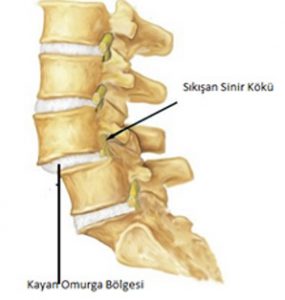The spine consists of a series of interconnected bones, each of which is called vertebra. Almost 5% of the adult population may have at least one developmental fracture on the bones conjoining the upper and lower joints of the lower-back vertebrae. The fracture may occur on one or both sides of the vertebra. These fractures are called “spondylodesis.” Due to the dynamic nature of the waist area, it is possible that these fractures cannot be healed. But, in some patients, the upper vertebrae may shift towards the lower spine due to the fracture. This condition is referred as spondylolisthesis (i.e. lumbar shift).
Usually, the lumbar shift manifests itself as the vertebra L5 shifts towards the vertebra S1. It has been observed that between 5 and 10% of the patients suffer from low-back pain are diagnosed with lumbar shift. Another type of lumbar shift is called “degenerative spondylolisthesis.” Generally observed in patients over 40 years of age due to wear and tear, this condition occurs as the vertebra L4 shifts towards the vertebra L5.

How Does Spondylolisthesis Get Diagnosed?
Listening the patient’s detailed medical history is the first step towards a spondylolisthesis diagnosis. Then, comes the physical examination. The patient’s posture and the amount of movement on his/her waist is examined. It should be reviewed in which movements the patient experiences pain or other similar complications. Also, the senses, muscle strength and reflexes must be examined. Usually, the waist area is scanned with an x-ray to come up with a diagnosis. Thus, it becomes possible to identify whether the vertebra has shifted and determine the degree of the shift.
However, computer tomography scan may also be required if more information is needed for a diagnosis. With the computer tomography scan, the bone tissues are evaluated in sections. If the patient has any neural problems, the tomography scan may be combined with a myelography. For this purpose, a special paint is injected into the subarachnoid space within the spinal cord channel. In the tomography scan, these painted neurons become visible.
How to Treat Spondylolisthesis?
If it is observed during the diagnosis process performed before starting the spondylolisthesis treatment that the spinal shift is not excessive, the first option of treatment will be surgery-free. The patient is prescribed with medication that will reduce the pain and spasms. Also, the patient is advised to avoid challenging activities and to rest his/her waist. If the patient’s complaints do not reduce during the prescribed resting period, he/she may be required to wear a solid corset or plaster cast for 2 or 3 months. In cases where these treatments are ineffective, the epidural injection may be considered as a possibility.
However, in cases where the shift is considered significant or the surgery-free methods do not achieve successful results, surgical intervention will become an option. Among the most common types of surgery used in the treatment of spondylolisthesis are; laminectomy,
posterior fusion with instrumentation, and posterior lumbar interbody fusion. Endoscopy is used to treat spondylolisthesis conditions that are not high grade.




